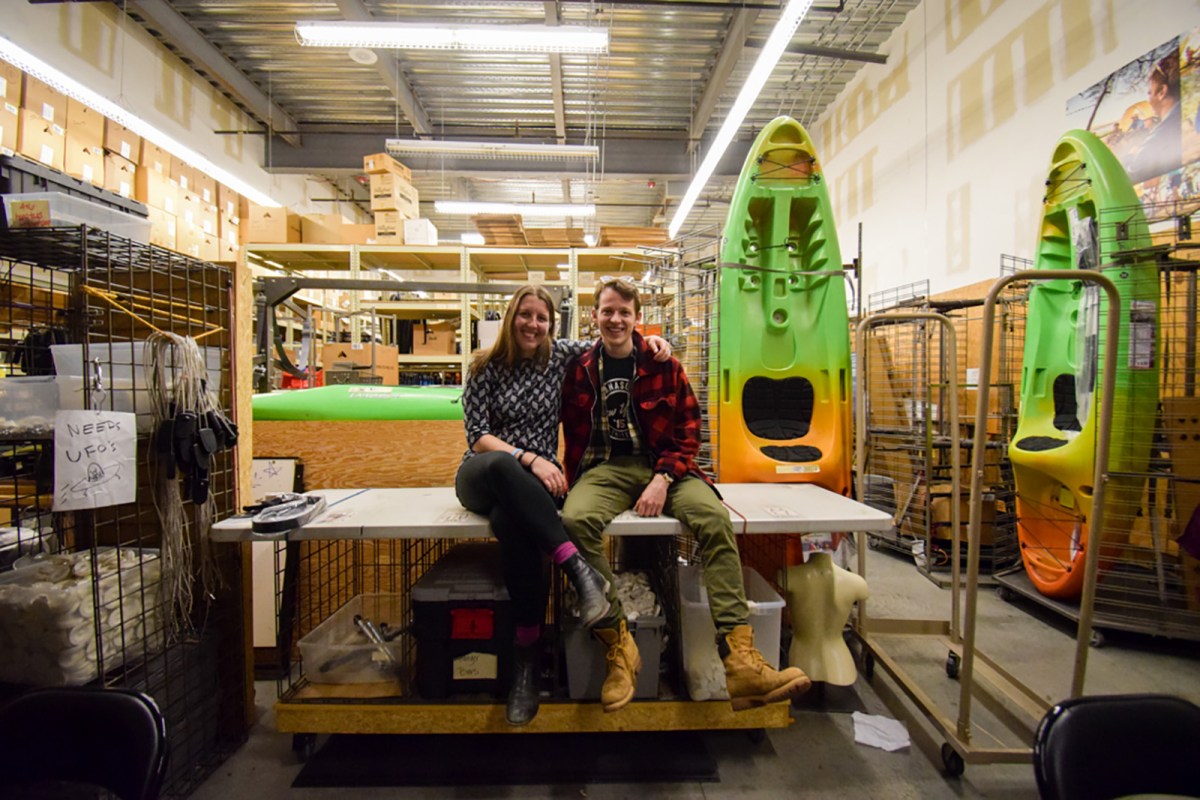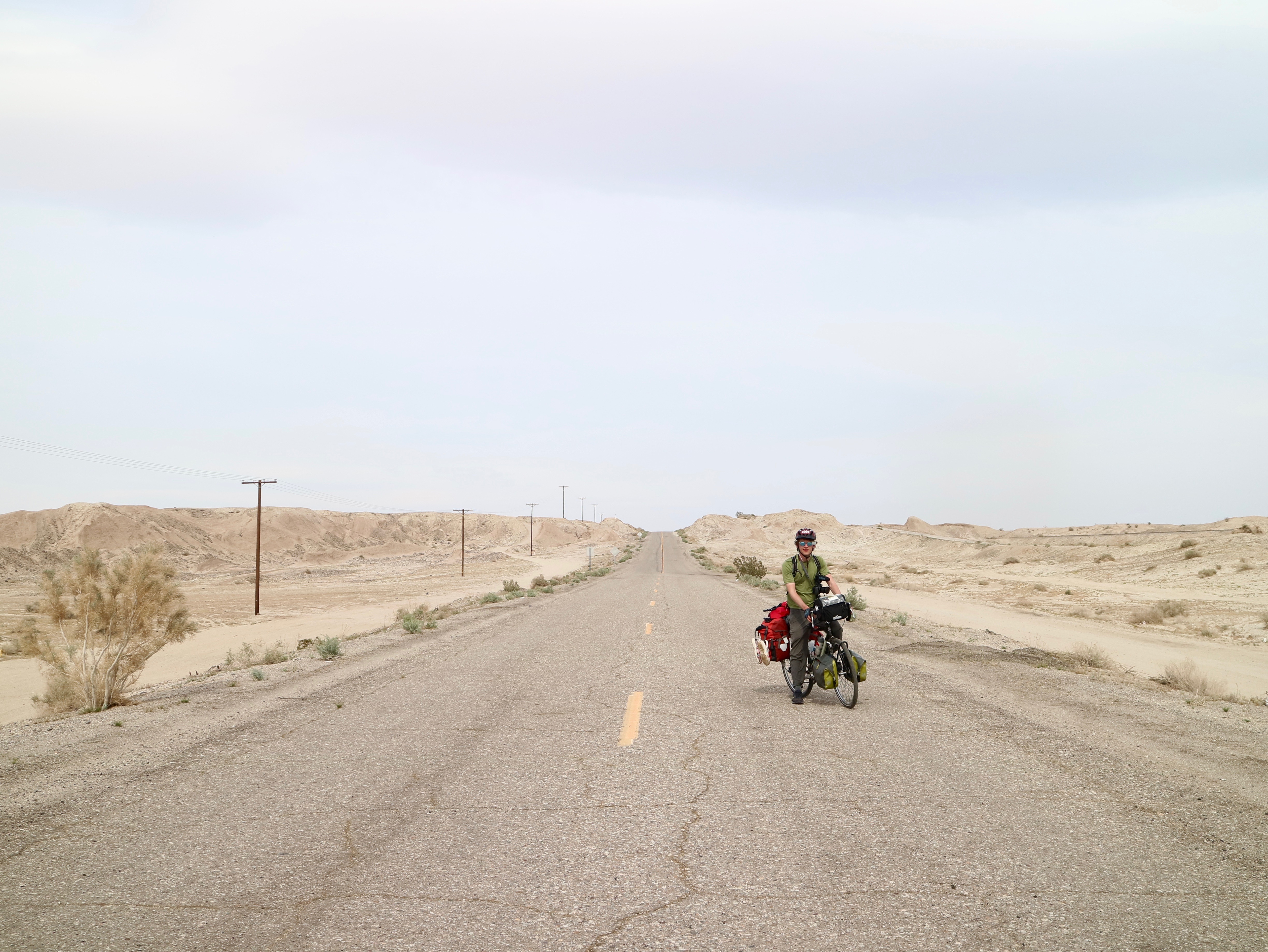Annalisa van den Bergh had pedaled for nearly two weeks and 400 miles to arrive in Rosedale, Virginia, a town of 930 people near the Blue Ridge Mountains. She and her cycling partner, Erik Douds, were on the TransAmerica Trail, a 4,223-mile route mapped in 1976 that spans the U.S. from Oregon to Virginia. And on this night in May 2017, they joined other cyclists at a welcoming church, unrolled sleeping bags between pews, and fell asleep.
Doug Strange, who was cycling the TransAmerica with his wife, Donna, slept nearby. “All night, these alarms keep going off,” he said. “We’re like, ‘What is this?’ We had no idea.”
The next morning, Strange learned the noises came from van den Bergh and Douds’ electronic devices. As their Dexcom and Omnipod next-to-skin sensors detected blood glucose levels above or below a safe range, they delivered alerts via Bluetooth to a smartphone or tablet.
For these cyclists, that’s essential data. Van den Bergh and Douds both have Type 1 diabetes, meaning their bodies do not produce the insulin necessary to transform glucose into energy. According to a 2017 report from the Centers for Disease Control, 30.3 million Americans live with diabetes; JDRF, a nonprofit that fundraises for diabetes research, reports that 1.25 million people have Type 1. The autoimmune disease can develop at any age if the pancreas stops producing insulin. There is no known cure.
Van den Bergh and Douds monitored insulin levels constantly as they completed the TransAmerica in 2017. They did the same as they rode 1,000 miles through Alaska last year. And in March, the 27-year-olds left Los Angeles to pedal roughly 1,800 miles to Santa Fe, New Mexico, by May 4. The trip includes five REI store events to share Miles of Portraits, a photo and video project that documents their travels and shares stories from the people they meet along the way. As they pedal from beach to desert, those beeps that echoed through the Rosedale church continue to help them monitor their glucose levels.
This marks their second Tour de REI. In January 2019, Douds and van den Bergh visited five REIs between Washington, D.C., and Boston. As they drove through ice and snow, pedaling in shorts and tees became more appealing. “People asked, ‘What are you going to do next?’’ said Douds, who suggested the Southwest based on a previous visit. “We started saying it, and then it started happening.”

Annalisa van den Bergh and Erik Douds at an REI in Rhode Island. PHOTO: Courtesy of Annalisa van der Bergh and Erik Douds
The cycling partners first connected three years ago at a New York City MeetUp event. Both had been laid off, and van den Bergh’s mother had recently passed away. When van den Bergh was a teenager, her mother signed her up for her first cross-country bike trip. Now, to honor her mother’s memory and her own healthy body, van den Bergh planned to repeat the feat. Did Douds want to come?
Months later, they logged 60- to 100-mile days on the TransAmerica. “In some sense, it’s harder to manage diabetes on a bike, because your routine is not as stable every day,” said van den Bergh. “The other side of that is when we have high blood sugar, biking takes the form of medication.”
As they pedaled farther beyond their comfort zone, they learned more. They ship insulin to gas stations that can refrigerate medication. Breakfast often means chia seed pudding, a high-fiber choice that won’t make their blood sugar spike, and packing extra peanut butter and gummy bears to stave off sugar lows. The website Warm Showers (think couchsurfing for cyclists) provides shelter when needed. And if medical supplies run out, they ask for help on Instagram—and occasionally discover guardian angels in their messages. Before their REI event in Arcadia, California, a fan contacted them to offer a few surplus Dexcom sensors. The gift helped van der Bergh finish packing for the L.A.-to-Santa Fe trip—a task left unfinished even after lengthy phone calls to her insurance provider.
When their needs diverge, they adapt. In Alaska, Douds pedaled in circles to keep his blood sugar levels from rising while van den Bergh treated a low. He paused just long enough to photograph her injection. That image covers the April 2019 issue of Adventure Cyclist Magazine, which aligns with the 10-year anniversary of van den Bergh’s diagnosis. “At first, I felt ashamed taking injections in public,” she said. “It’s really powerful to go from injecting myself in a bathroom stall to injecting myself for the cover of a magazine.” She marked the anniversary of her diagnosis on March 30; the milestone fell after a 100-mile day pedaling through the Mojave Desert and just before she and Douds cycled across the Arizona border.
They carry that message—it’s possible to manage diabetes while biking—on their travels, too. In late March, van den Bergh and Douds joined a cycling team in San Diego sponsored by JRDF. Over a 20-mile ride with nearly 40 cyclists, van den Bergh and Douds shared how they adapt and take care of themselves while biking. “They showed our riders it’s manageable to ride 20, 40, or 100 miles and take all their supplies with them,” said JDRF Volunteer Coach Ray Schatzlein. “It’s motivating to see that this is doable.”
That ride was a linear journey, like all bike trips, with a start and finish. Relationships forged over the miles or roadside connections can feel equally finite. “The last time we saw Annalisa and Erik on the TransAmerica, we were really sad,” said Strange.
But as the years advance, van den Bergh and Douds’ so-called trail family keeps in touch, visits, and expands. Cycling partners cross state lines to attend REI events, joined by friends from elementary school and Instagram. On the road, strangers ask about their bikes, then invite van den Bergh and Douds to stay in their homes. Each adventure expands their community, and new trips lead them back to familiar faces.
After van den Bergh and Douds ride from L.A. to Santa Fe, they hope to pedal on other continents, and perhaps complete a global tour—then bring videos, photos and stories back to their expanding trail family. “This time, it wasn’t hard to say goodbye,” said Strange. “We just said, ‘Go—we can’t wait to hear all about it!’”
